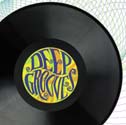
Introduction
Pre-1940s
1940s-1950s
1960s
1970s
1980s
1990s
Bonus Cuts
Souvenirs
Comment
on this story
|
|

The 1940s & '50s
Roy Acuff
The Essential Roy Acuff
(CBS)
Roy Acuff moved to Knoxville from Maynardville when he was a boy, and as a young man worked for the L&N and tried to break into pro baseball. He allegedly learned the fiddle from a Fountain City mechanic around 1929. About a decade later, Acuff startled a nation hypnotized by elegant and sentimental big-band stylings with rousing barnburners like "Wabash Cannonball" and "Fireball Mail." Playing songs he'd been playing here for years (his first record, "Great Speckled Bird," he learned from a now-anonymous Knoxville street band), Acuff's distinctive vocals inspired the young Hank Williams and, later, George Jones. He became country music's first big national star—and, along the way, also made the small string combo a permanent force in popular music, earning him a mention in all histories of rock 'n' roll. Nashville brought him almost immediate success on the Opry, where they called him the King of Country Music; musically, though, he hardly budged. He lived to the age of 85, he became a recording-industry big shot and even a Republican politician—but he had already recorded his best work within a couple of years of when he got off the train from Knoxville. Acuff did his best work before the album era; this 1992 CD compilation of his early singles shows Roy at his best.
(J.N.)
Brownie McGhee
The Folkways Years, 1945-59
(Smithsonian/Rounder)
A Knoxville native who spent the '30s playing streetcorners and juke joints around the area, guitarist and singer Walter "Brownie" McGhee, with and without his most famous harmonica-playing partner, Sonny Terry, may have been the finest practitioner of the "Piedmont" country/blues style of his day. This 1991 album offers the best proof of McGhee's surprising breadth, with a few collaborations with his equally Knoxvillian little brother Stick ("Drinkin' Wine, Spo-de-oh-dee") McGhee, who's credited by some historians as one of the co-founders of rock 'n' roll. They say it was a description of a Brownie McGhee song in 1947 that spawned the term rock 'n' roll. "It rocks, it rolls," they said. Half a century later, it still does.
(J.N.)
Swan Silvertones
Love Lifted Me/My Rock
(Specialty)
Claude Jeter brought his a cappella quartet, Four Harmony Kings, from Coalwood, W. Va., to Knoxville in 1942, when they began a 15-minute radio show sponsored by the Swan Bakery Company on the Knoxville station WBIR. They changed the group's name to the Swan Silvertones. Soon afterward, recording for King Records, they began to develop a national reputation. From 1951 to 1953 they recorded some hard rockin' gospel with electric guitar and energetic piano accompaniment for Specialty Records, where the producer exhorted them to tear down the house—but issued only four singles before they were dropped by that label. Eventually, Specialty issued more of the material on LPs including Love Lifted Me and My Rock. Those two LPs on one CD make exciting listening that you know would have been a real kick for a young James Brown, Janis Joplin, or Sly Stone. They enjoyed greater success in the ensuing years at Vee-Jay Records. Jeter's smoother tenor and falsetto on the Vee-Jay platters is credited with formative influence on Sam Cooke.
(M.D.)
Homer & Jethro
The Worst of Homer & Jethro
(RCA)
The title of this 1957 compilation says it all. This is the classic collection by country music's answer to Spike Jones (with whom they sometimes collaborated); billed as "the thinking man's hillbillies," Homer and Jethro were the missing link between vaudeville and Weird Al Yankovic. Both Knoxville natives were talented musicians—Kenneth "Jethro" Burns, in particular, has a reputation as a swing-style mandolinist. But they had a wacky, sometimes wicked streak that wrought irreverent parodies of the hit songs of the day. "How Much Is That Hound Dog In the Winder" is on this collection, as is their all-time classic, "Jam Bowl Liar," a riff on Hank Williams' "Jambalaya."
(J.N.)
The Everly Brothers
Cadence Classics: Their 20 Greatest Hits
(Rhino)
Starting their duo career in Knoxville, newly out from under the wings of the family's act, the Everly Brothers broadcast live performances from the WROL studios in the old Mechanics Bank building on Gay Street. After refining their approach in collaboration with the not-too-country Chet Atkins, the brothers anticipated (or invented) many nuances that were to make the Beatles the pop phenomenon they soon became.
That the Everlys belong in this list is undebatable; picking one collection is problematic. The Cadence collection has almost all of their hits: "Wake Up, Little Suzie," "Bye Bye, Love," "Bird Dog"—their finest, best-known work, in fact, with one big exception. That's "Cathy's Clown," which happens to be the Everlys' biggest hit of all time, and the one most clearly associated with Knoxville. This lament from a broken-hearted teen at West High School is one of the few songs the brothers wrote themselves. Unfortunately for archivists, the Everlys recorded it after they moved to Warner Brothers, which has been jealous about loaning it out for compilations. "Cathy's Clown" opens Walk Right Back (Warner Brothers), an often surprising collection of their work in the 1960s, when they were more popular in Great Britain than at home. It's a real pleasure from start to finish.
(M.D. & J.N.)

|